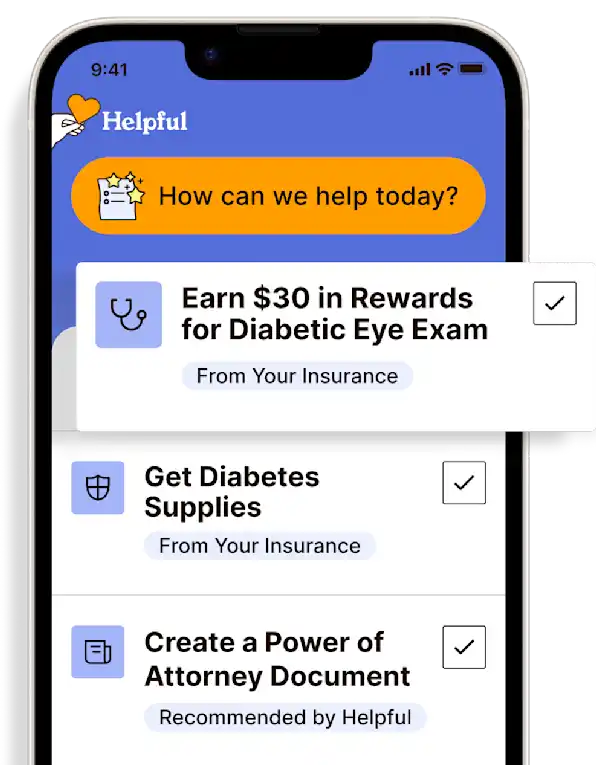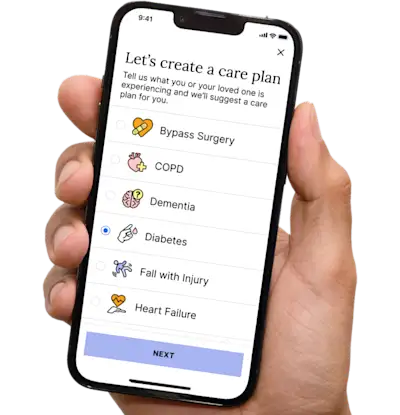Navigating Oxygen and Equipment Prescriptions for Your Loved One: A Practical Guide
Ensure your loved one gets the correct oxygen and equipment at home with this guide: gather info, secure a prescription, and use the Helpful app for support.
Get insurance benefits, legal documents, and medical records in one place

Ensuring your loved one receives the correct oxygen and equipment for home use can be a daunting process. However, with clear guidance and the right information, you can make this transition smoother and more comfortable for them.
Here’s a step-by-step guide to help you through this important process.
1. Gather Your Loved One’s Information
Start by collecting all the necessary details about your loved one. You’ll need:
Name
Date of Birth
Address
Phone Number
Insurance Information (Insurance Company Name)
2. Obtain Medical Provider Information
Next, connect with your loved one’s medical provider. Gather their information, which includes:
Name
Specialty
Address
Phone Number
Fax Number
3. Determine the Type of Oxygen Therapy Needed
Discuss with the medical provider the specific type of oxygen therapy recommended for your loved one. The options may include:
Continuous Flow
Pulse Dose
Other (specify if applicable)
4. Establish the Oxygen Flow Rate and Usage
Your loved one’s medical provider will need to specify the details of the oxygen therapy:
Oxygen Flow Rate (LPM)
Duration of Use (hours per day)
Prescription Duration (start and end dates)
5. Qualifying Blood Gas Study
Ensure that a qualifying blood gas study was ordered and evaluated:
Description of the qualifying blood gas study results
Arterial PO2 (mm Hg) or oxygen saturation (%)
Conditions under which the study was performed (rest, sleep, exercise)
Date of the blood gas study
6. Secure a Prescription for the Oxygen and Equipment
Your loved one’s medical provider will need to fill out a prescription for the oxygen and equipment. Ensure your loved one’s medical provider includes the following information:
NPI (National Provider Identifier)
Date of Prescription
Diagnosis necessitating oxygen therapy
Reason for Prescription: Ensure that your loved one’s medical provider provides a brief explanation of your loved one’s medical condition that necessitates the use of oxygen and equipment. Include:
Relevant diagnoses
Medical history
7. Document Medical Necessity
Ensure the medical provider provides detailed records supporting the need for the oxygen and equipment and any accessories. This documentation should cover:
Diagnosis
Treatment plan
How the oxygen and equipment will address healthcare needs
Type of Oxygen Therapy Needed
Any Recommended Accessories
Statement confirming that oxygen therapy will improve the patient's condition in the home setting
Any concerns for variations in oxygen measurements documented (e.g., patient’s age, skin pigmentation, altitude level)
8. Determine Group Classification
The patient's group classification based on the criteria outlined:
For Group I and II:
Confirmation that the patient meets the specific criteria (e.g., arterial PO2, oxygen saturation levels)
For Group III:
Documentation of medical condition with distinct symptoms improved by oxygen therapy
9. Confirm Testing Specifications
Ensure all testing was performed in accordance with Medicare guidelines:
Details of any oximetry or blood gas studies conducted:
Type of study (oximetry or arterial blood gas)
Date(s) of testing
Results obtained during different conditions (rest, exercise, sleep)
10. Consider Other Medical Conditions
Any additional medical conditions impacting oxygen therapy eligibility
Use of oxygen therapy in conjunction with other treatments (e.g., Positive Airway Pressure devices for sleep apnea)
Prescription of any associated accessories or supplies (e.g., cannula, mask, tubing)
Final Steps: Provider’s Responsibility
Submit the Documentation: While it’s important for you to gather all the necessary information, your loved one’s medical provider is responsible for submitting the prescription and supporting documents to the insurance company or the appropriate durable medical equipment (DME) vendor.
Follow Up: Check in with your loved one’s provider to ensure the prescription is being processed and to address any potential issues promptly.
Encouragement and Support
Remember, you’re not alone in this process. It’s natural to feel a bit daunted, but every step you take brings your loved one closer to the comfort and care they need. Lean on your medical provider for support and don’t hesitate to ask questions. Your diligence and care make a world of difference.
By following these steps and collaborating with your loved one’s medical provider, you’ll help ensure your loved one receives the appropriate oxygen and equipment to meet their medical needs and improve their quality of life at home.
Get more support and guidance on insurance benefits, medical records and legal forms.
Helpful brings together your insurance benefits, legal documents, and medical records in one personalized place — so you always know what you have, and never have to search again.

Technology for Health Tasks. Mental Health for the Tough Stuff.
Helpful connects your medical records, insurance, and caregiving tasks automatically. And when you need more than logistics, a therapist is here to guide you.
In-Network and Covered
For Individuals, Couples and Families
HIPAA Compliant, Data Stays Private


Healthcare Tasks Simplified

From syncing records to spotting drug interactions, Helpful does the heavy lifting, turning complex health info into clear tasks and showing you benefits you can actually use, giving you clarity and control over your care.

In-Network Mental Health

Our licensed therapists are here to support you and your loved ones through stress, burnout, and life’s hardest moments, with an inclusive, compassionate approach that works with most insurance plans.

Create Legal Documents

Plan ahead by creating will, trusts, advance directives and more, that ensure your wishes are honored in the event you can’t speak for yourself -with Helpful guiding you every step of the way.